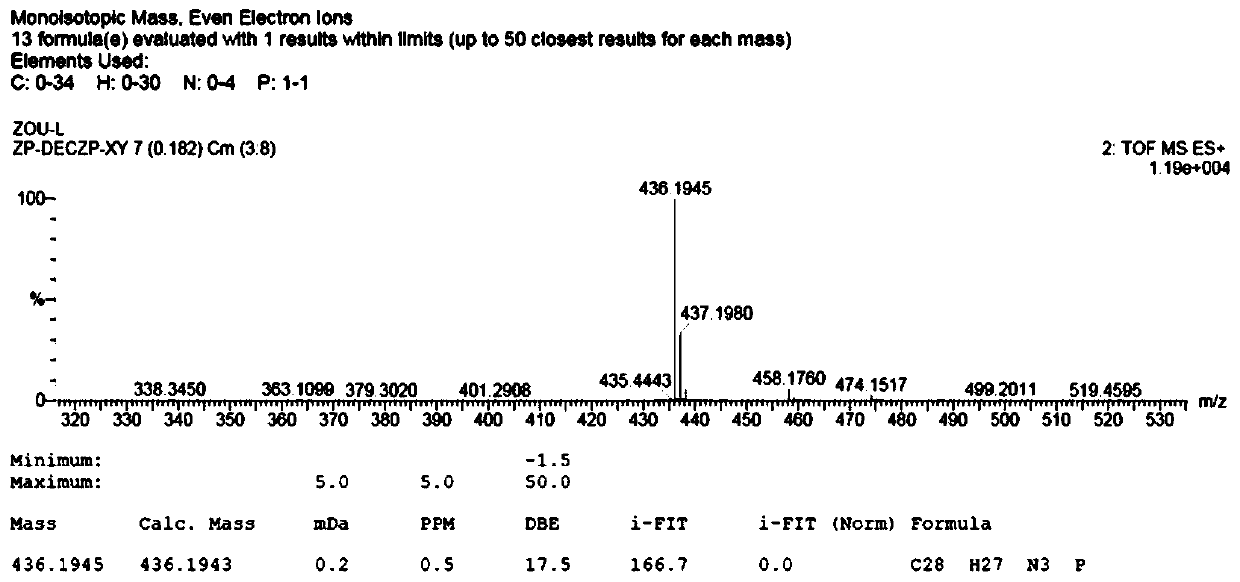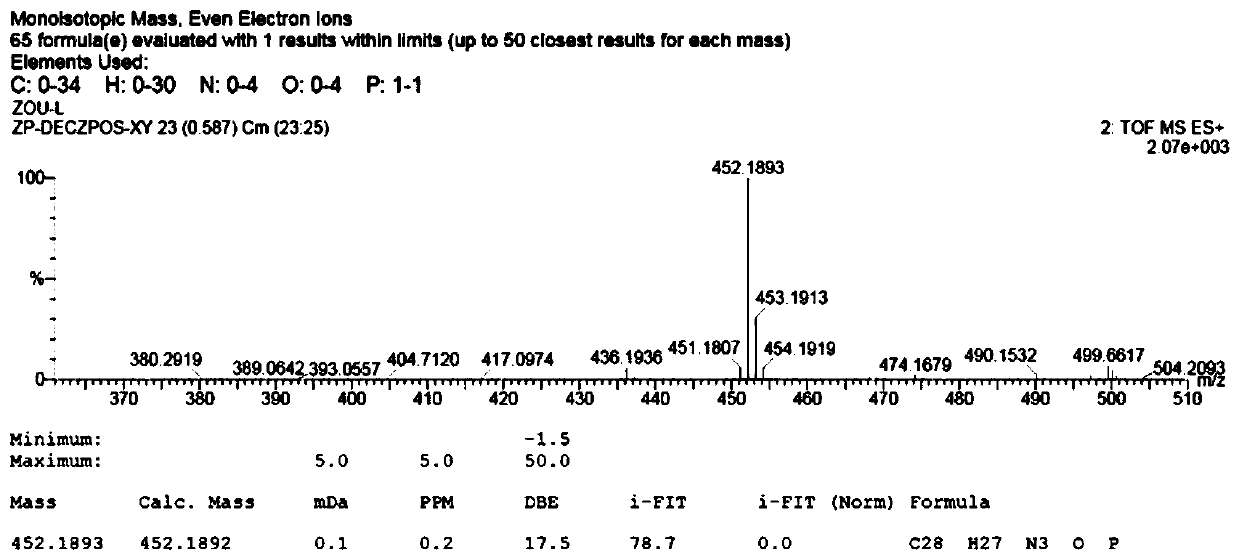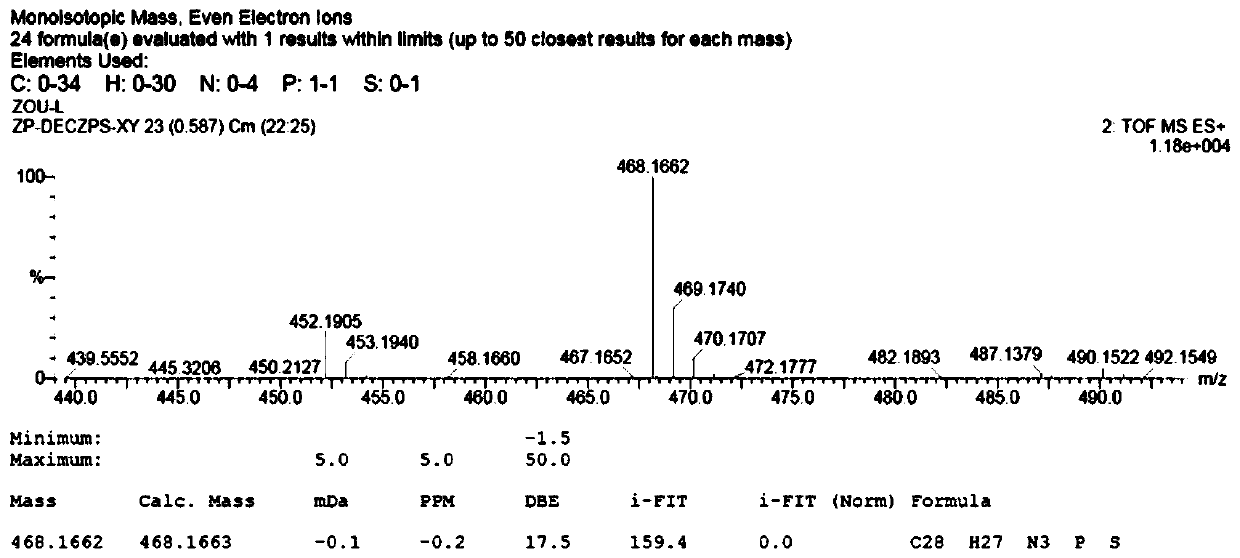Photoelectric material containing N-P=O(S) resonating structure, preparation method and application
A technology of optoelectronic materials and resonant structures, applied in luminescent materials, chemical instruments and methods, circuits, etc., can solve other problems such as performance degradation, deviation from the original design intention, etc., to achieve good thermal stability, conducive to energy transfer, high yield Effect
- Summary
- Abstract
- Description
- Claims
- Application Information
AI Technical Summary
Problems solved by technology
Method used
Image
Examples
Embodiment 1
[0041] Embodiment 1: Synthesis of photoelectric functional material DECzPO
[0042]S1: Weigh the drug, put carbazole (1.0 g) into a 50 mL double-necked round-bottom flask, add a stirring magnet, use a double-row tube to evacuate, repeatedly blow in argon gas 3 times, and finally fill the balloon. Set up the apparatus so that it is under argon protection. The flask was cooled in an ice bath for 10 min, and the magnetic stirrer was turned on, and 25 mL of freshly distilled tetrahydrofuran (THF) solvent was slowly added dropwise with a syringe. Pour into the reactor, oscillate and shake well, and the medicine is fully dissolved. Add dry ice around the bottom of the double-necked round-bottom flask to keep the reaction system at -78°C, slowly drop 5.0 mL of n-butyllithium reagent into the above-mentioned vacuum-sealed flask and react for 1 hour, the light yellow will turn into grape red, and the reaction system will be obtained. a.
[0043] S2: At -78°C, use a syringe to quickl...
Embodiment 2
[0049] Embodiment 2: Synthesis of photoelectric functional material DECzPS
[0050] S1: Weigh the drug, put carbazole (1.0 g) into a 50 mL double-necked round-bottom flask, add a stirring magnet, use a double-row tube to evacuate, repeatedly blow in argon gas 3 times, and finally fill the balloon. Set up the apparatus so that it is under argon protection. The flask was cooled in an ice bath for 10 min, and the magnetic stirrer was turned on, and 25 mL of freshly distilled tetrahydrofuran (THF) solvent was slowly added dropwise with a syringe. Pour into the reactor, oscillate and shake well, and the medicine is fully dissolved. Add dry ice around the bottom of the double-necked round-bottom flask to keep the reaction system at -78°C, slowly drop 5.0 mL of n-butyllithium reagent into the above-mentioned vacuum-sealed flask and react for 1 hour, the light yellow will turn into grape red, and the reaction system will be obtained. a.
[0051] S2: At -78°C, use a syringe to quick...
PUM
| Property | Measurement | Unit |
|---|---|---|
| thermal decomposition temperature | aaaaa | aaaaa |
Abstract
Description
Claims
Application Information
 Login to View More
Login to View More - R&D
- Intellectual Property
- Life Sciences
- Materials
- Tech Scout
- Unparalleled Data Quality
- Higher Quality Content
- 60% Fewer Hallucinations
Browse by: Latest US Patents, China's latest patents, Technical Efficacy Thesaurus, Application Domain, Technology Topic, Popular Technical Reports.
© 2025 PatSnap. All rights reserved.Legal|Privacy policy|Modern Slavery Act Transparency Statement|Sitemap|About US| Contact US: help@patsnap.com



